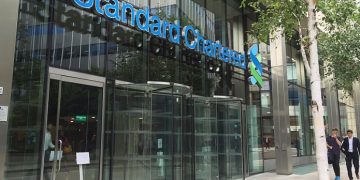 These days, the digital world is just as important in the field of education as books and teachers. It’s an integral component of the modern classroom, and it opens the doors to an array of new learning opportunities. Digital tools can help make learning more fun for students, and for some, it makes mastering certain lessons much easier. They also give both students and instructors more flexibility and allow for more personalized learning plans among other advantages.
These days, the digital world is just as important in the field of education as books and teachers. It’s an integral component of the modern classroom, and it opens the doors to an array of new learning opportunities. Digital tools can help make learning more fun for students, and for some, it makes mastering certain lessons much easier. They also give both students and instructors more flexibility and allow for more personalized learning plans among other advantages.
While several tools and techniques come into play here, lecture capture is one of the most widely used. It’s the process of, and the equipment used for, recording lectures on video. It allows students to watch lectures when it’s convenient for them or rewatch them as many times as needed to fully understand a lesson. It gives students an opportunity to brush up on certain lessons before tests or keep themselves from falling behind if they miss a live lecture. An array of solutions is available for this purpose, but in general, the following are key components of lecture capture systems.
Table of Contents
Video Recording Equipment
Video recording is an essential element of lecture capture. It not only records the speaker’s lecture but allows educators to incorporate visual aids into their presentations. Video recording equipment helps to provide a more complete visual experience and aids in making viewers feel more engaged in presentations. It may include laptops, cameras, or other video recording tools.
Audio Recording Equipment
Of course, visual elements are only one piece of the puzzle. No presentation would be complete without its accompanying audio, so audio recording equipment is equally important. It helps to clearly get the speaker’s points across. In some cases, audio recording equipment is integrated into video recorders, such as built-in microphones in a computer or camera. Other times, it can be separate tools, like mixers or entire audio systems.
Post-Production Tools
Post-production tools can be an essential part of a lecture capture system as well. They allow creators to edit their video and audio content, add in extra material after recording, cut out mistakes or repetitive material, and carry out other measures. These tools give creators the opportunity to improve the quality of their finished products and tailor their materials to their audiences.
Encoding Equipment
Encoding equipment is also crucial for lecture capture systems. It converts raw video and audio into different digital formats. It also allows creators to further control the quality of their recordings, manage multiple input sources, and embed metadata among other tasks. Again, this type of equipment can be built into recording equipment or additional standalone devices.
Content Management Systems
Content management systems are also essential components of lecture capture setups. Content management systems are used for organizing and storing content and making it accessible to viewers later on. It’s important to use CMSs that integrate with the learning management systems being used by a school or other institution for optimal functionality. If a CMS doesn’t work well with an LMS, students may not be able to access recorded materials when needed.
Making the Most of Lecture Capture Systems for Instructors and Students
Lecture capture systems are crucial for today’s schools whether they’re used in traditional classrooms, for online learning, or as part of a hybrid learning program. They can make lessons more engaging, give students and instructors more flexibility, and help students gain a better grasp on their lessons. Numerous lecture capture solutions are available from simple systems to highly complex ones. In any case, the tools mentioned here are essential components.






